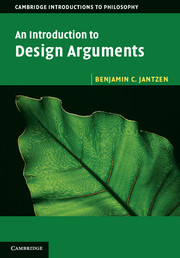Book contents
- Frontmatter
- Dedication
- Contents
- List of figures and tables
- Preface
- 1 Introduction
- 2 Preliminaries
- 3 Arguments from antiquity
- 4 Medieval arguments
- 5 The golden age of natural theology
- 6 Unusual design arguments
- 7 Hume
- 8 Paley
- 9 Darwin
- 10 Loose ends
- 11 The modern likelihood argument
- 12 Intelligent design I: irreducible complexity
- 13 Intelligent design II: specified complexity
- 14 What is complexity?
- 15 Supernatural agents and the role of laws
- 16 A brief survey of physical law
- 17 Fine tuning I: positive arguments
- 18 Fine tuning II: objections
- 19 Conclusion
- Bibliography
- Index
7 - Hume
Published online by Cambridge University Press: 05 June 2014
- Frontmatter
- Dedication
- Contents
- List of figures and tables
- Preface
- 1 Introduction
- 2 Preliminaries
- 3 Arguments from antiquity
- 4 Medieval arguments
- 5 The golden age of natural theology
- 6 Unusual design arguments
- 7 Hume
- 8 Paley
- 9 Darwin
- 10 Loose ends
- 11 The modern likelihood argument
- 12 Intelligent design I: irreducible complexity
- 13 Intelligent design II: specified complexity
- 14 What is complexity?
- 15 Supernatural agents and the role of laws
- 16 A brief survey of physical law
- 17 Fine tuning I: positive arguments
- 18 Fine tuning II: objections
- 19 Conclusion
- Bibliography
- Index
Summary
Overview
Ask a modern philosopher about Hume and the design argument, and there’s a good chance you’ll hear this story: the design argument is an argument by analogy that compares the universe to a machine and concludes that, like a machine, the universe has a designer. Of course, that designer is supposed to be God. For a brief period of time following the scientific revolution, this argument flourished. But in the late eighteenth century, a philosopher named David Hume unmasked the design argument as a hopeless failure. Those that continued to defend the argument after Hume, most famously a fellow named William Paley, were merely propping up a corpse – the design argument had already died at the tip of Hume’s pen.
As we will see in this chapter and the next, most of this tale is false. While Hume did in fact devastate the argument by analogy, it was largely an argument of his own creation. There are other types of design argument that, while seriously challenged by Hume, are not obviously defeated by him. In fact, Hume provides some of the most important rebuttals to his own critique, rebuttals that others like Paley will use to keep design arguments alive. But we’re getting ahead of ourselves. Let’s first take a moment to introduce Hume and the book that had such an impact on natural theology.
- Type
- Chapter
- Information
- An Introduction to Design Arguments , pp. 99 - 117Publisher: Cambridge University PressPrint publication year: 2014



